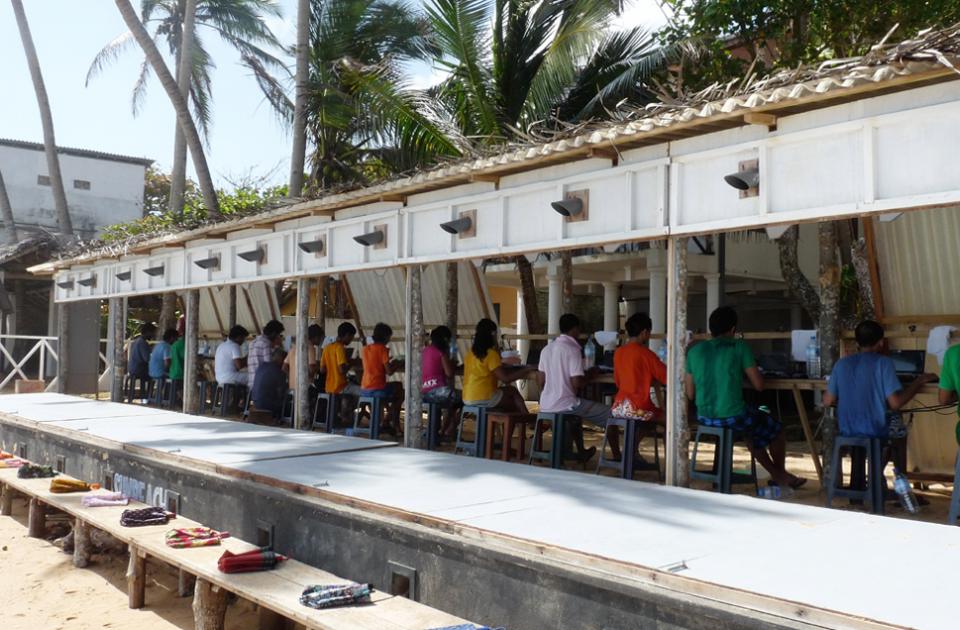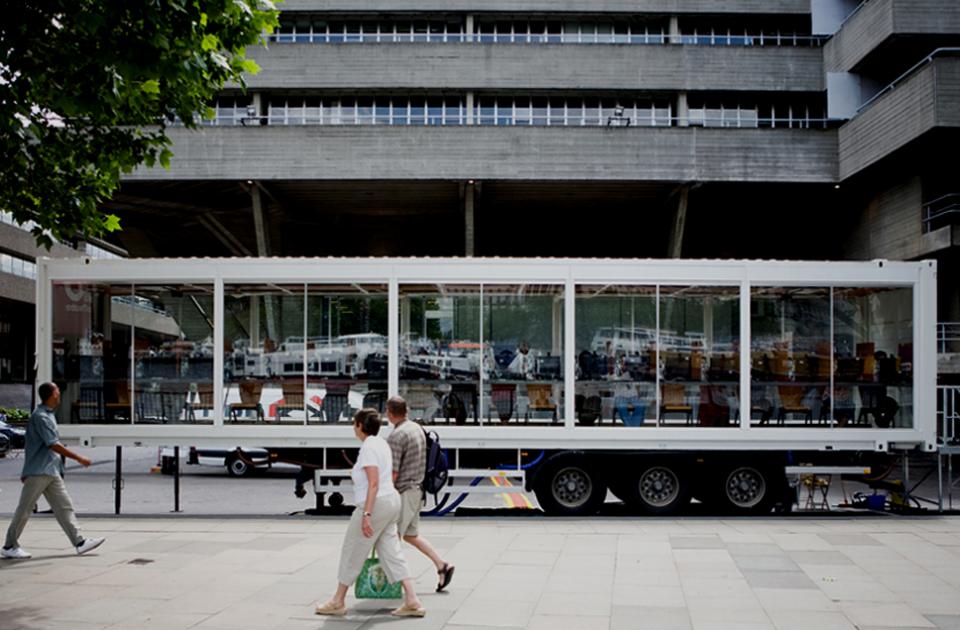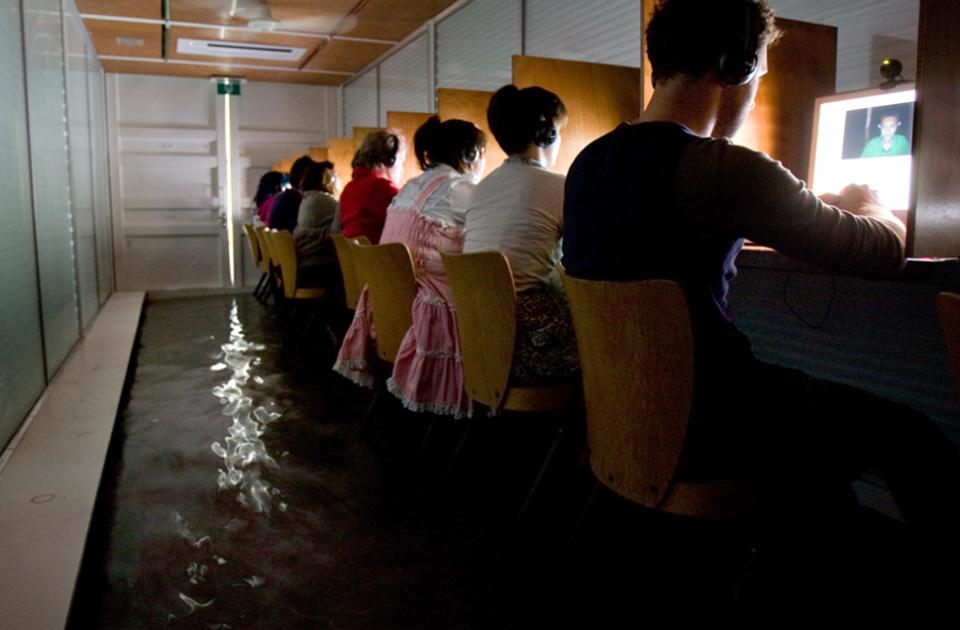
The tension between politics and aesthetics can be ascribed to the relation between authority and authorship. What is the political role of art? Could a particular theory of authorship in art present and demonstrate an alternative notion of political authority? New technological possibilities and a fresh political sensibility points towards a nascent theory of authorship (and authority) that exists between – and beyond – the ideas of modernism and postmodernism: common (metamodern) authorship.
The critic Peter Burger stated that the modernist avant-garde loathed the idea of art as an autonomous sphere of production, separate from the sphere of politics and thus unable to directly intervene in the construction of modern society. They asserted that the values of their art should become the values of their culture, indicating their utopian aim to organise society from a basis in art. However, several commentators have observed that the modernist era was one in which reformers prescribed a certain system of authority and demanded obedience and support. Although the avant-garde believed that their authority was incontestably justified, they were essentially advocating a form of cultural totalitarianism.
Later in the twentieth century, Barthes famously asserted that the author was dead and the reader had been born. However Barthes’ declaration that the author was dead didn’t simply mean that the reader had a greater influence over the meaning of a particular text or artwork. If you merge his provocation with the mission of the modernist avant-garde, one can conclude that a form of social organisation or notion of authority can no longer be imposed on passive subjects, it is something that is produced among collaborative agents. The metamodern author(s) strides out from this union of modernism and postmodernism, politics and aesthetics, authority and authorship. But what kind of artistic projects represent the practice of the metamodern author most clearly?
In his 2008 speech at the Tate Modern, the political philosopher Antonio Negri proclaimed that contemporary artists are obliged to confront a new set of questions about our current political and social climate, including “how can the human being be entirely re-thought?” (Negri 2011:106). For Negri, artistic labour belongs to the sphere of biopolitical production, which is described as the “production of ideas, codes, images, affects and social relationships (that) directly treats the constituent elements of human subjectivity.” (Hardt and Negri 2009:172). He argues that subjectivity is determined by our forms of cooperation and communication with others, therefore, art can reconfigure the notion of the human being by embracing the values and methods of participation and collaboration. In fact, Negri’s question indicates a shift in the desired result of the artistic process from the primarily material or visual to the social and relational.
However, artistic projects that deal with the sphere of human relations often suffer from the naïve assumption that interaction and participation automatically result in valuable and equal human social relationships. In her survey of relational art, Claire Bishop stipulates that the most “logical question to ask is what ‘types’ of relations are being produced, for whom and why?” (Bishop 2004:67).
Negri declares that “the only artistic values which matter are those which anticipate (the) becoming the multitude – in its crises as much as in its advancement, in the conflict of singularities as much as in their happy arrangement within what is common” (Negri 2011:98). The multitude is a central concept in Negri’s thought (developed and expanded with Michael Hardt) and can be described as a form of social organisation that acknowledges and accepts singular differences yet realises that all subjectivities are rooted in a common human sphere. They emphasise the importance of becoming over being, process over product and common freedom over private control. As biopolitical producers, artists have a responsibility for trying to incorporate these values into their practice. However, they must be aware of Hardt and Negri’s assertion that biopolitical production “can only take place on the terrain of the common” (Hardt and Negri 2009:173).
But what constitutes the terrain of the common? Negri argues that the project of the multitude has only become possible since the rise of Post-Fordist, or ‘immaterial’ labour, which is “socially organised through linguistic, cooperative, electronic and digital networks, which are all extremely material and…takes place through types of association and movements” (Negri 2011:107). These types of networks are essential to the structure of metamodern authorship because they provide a common technological terrain upon which two or more authors can form a relationship, resulting in a process of metamorphosis.
Negri defines metamorphosis as “the face of the ontological depth of the artistic art – the unification of anthropogenesis and technogenesis” (Negri 2011:155). In other words, metamorphosis is the liberation of potential subjective figures through the invention and exploration of techno-social relations. Negri explains that the metamodern artist must provide tools with which participants can engage in the process of metamorphosis and thus connect to a network. As a result, participants present their bodies “in the form of prostheses…as a surplus of physical Potenza of bodies, obtained through the acquisition of new tools…(and they) expand in the form of networks…(to fix) themselves in the communication and cooperation of bodies” (Negri 2011:79). The post-biological interactions and relationships that take place over these artistic networks form the basis of metamodern authorship, which result in the integral and inclusive whole of the triad artist/artwork/participant. Consequently, Hardt and Negri argue that “these monstrous metamorphoses of the flesh (gives us) a possibility, the possibility to create an alternative society” (Hardt and Negri 2005:194). To answer Bishop’s question, these artistic projects are designed to produce post-biological relations that contribute towards the constitution of the multitude, thus increasing the possibility of creating an alternative society.
To clarify, the artists who design the collaborative networks are involved in the authorship of the work but they are not the primary author; they facilitate the inter-subjective relationships between the participants, which form the central artistic content of the work. The authorship is distributed among everyone who participated in the creation of a social network and helped to generate new terrain of the common.
Dries Verhoeven’s 2010 interactive performance Life Streaming can serve as an example of the metamodern incarnation of authorship. Life Streaming was centred on a computer-mediated dialogue between a participant located in London and a performer in Sri Lanka, who communicated with one another over a distance of approximately 9000 kilometres from performance spaces that Verhoeven had called ‘internet cafes’. Verhoeven wrote that he created Life Streaming to confront and contradict the mainstream media’s representation of the third world, specifically focusing on the 2004 Indian Ocean tsunami. In her overview of the British media’s representation of the tsunami, the academic Tracey Skelton argued that the coverage constantly resorted to “hegemonic representations of us and them” (Skelton 2006:12). The cultural theorist Robin Van Den Akker would say that these hegemonic representations belong to “the media logic of postmodernism – (of the) television screen and spectacle, cyberspace and simulacrum – (which) is slowly but surely being replaced by the media logic of metamodernism: network culture”.
But what is this network culture capable of? Hardt and Negri argue that artistic networks “not only demand an open and inclusive democratic global society, but provides the means of achieving it” (Hardt and Negri 2009:xiii). But Verhoeven recognises that, before this global society can be established, we must overcome the engrained ideological divisions between the citizens of different geopolitical states and reveal that we belong to a common world, a revelation that is the biopolitical basis and condition of the multitude.
Verhoeven affirms the values of cooperation and communication in Life Streaming by explaining that “the real piece comes to life through a dialogue” (Czirak 2011:82). The dialogue emerges as the performer invites the participant to discuss their experiences of home, loss and love. As they respond and contribute to the reciprocal exchange of personal stories, both parties start to empathise with one another through the process of analogy. The philosopher Paul Ricoeur explains that relating to another person through analogy requires a “transfer of imagination into the ‘there’…directly reading the expressive signs of another’s lived experience” (Ricoeur 2008:232). Although personal stories only present a singular account of an experience, one can form analogous links between one’s own experience and another experience through imaginative leaps. Negri argues that verbal exchanges take place on the common and form linguistic networks, thus adding a layer to the constitution of subjectivity. However, you might ask, what is so special or transformative about that kind of relationship? People share stories and chat on the internet all of the time, why does this encounter deserve to be called art?
That’s why Verhoeven’s choice to call the performance spaces internet cafes is so interesting. It signals a renewal of the modernist avant-garde mission, to reduce the distance between art and life to the point where art enhances and enriches life. Although we are more accustomed with the post-biological tools that were used in Life Streaming (a desktop computer, a webcam and an internet connection), they can still be used to instigate a process of metamorphosis, albeit a more recognisable one. (I admit that, given the ubiquity of smartphones and 3G, the example of an internet café might seem slightly outdated, but the point still stands.)


Negri explains that when an artwork produces relationships in the common, it becomes “a motor of ontological transformation” (Negri 2011:111). Life Streaming can be seen as motor of subjective transformation insofar as it participates in “the production of a global vision through networked interaction…through a multiplicity of different cultural, social, geographical and personal layers” (Ascott 2003:238). As a result, the networked interaction of Life Streaming successfully turns the other into a neighbour, a collaborator, a comrade. The ontological transformation of the British participant or Sri Lankan performer from a remote other into a common neighbour serves as a prerequisite of the global citizenship of the multitude.
New subjective relations emerge from these artistic networks, transforming individual subjectivities and forms of communication, as Negri explains, “only with our own transformation…can the practice of the multitude begin” (Negri 2007:55). As a precedent for the multitude, the “creation of a new humanity is the ultimate act of (political) love.” (Hardt and Negri 2005:356). However, this new humanity can only operate as the multitude if it is incarnated in an institution that facilitates and organizes the return of collaborative social interactions. If the work of metamodern authors can produce social relations through the upward spiral of communication and cooperation, rather than the downward organisation of hierarchies, divisions and limits, they can provide the foundation for the multitude to sustain an alternative political democracy.
However, in the mercurial spirit of metamodernism, where one can shift from a hopeful attitude to a sceptical one instantaneously, there are a couple of flaws with Life Streaming that need to be addressed. Firstly, the dialogue is in English, which exerts the hegemonic dominance of the US figure, the privileged art consumer who can afford to participate in Verhoeven’s installation. Secondly, Verhoeven concedes that there were participants who just wanted to chat about Sri Lankan sex life, indicating that they still viewed the performers as an exotic foreigner, rather than a fellow human being. He points out that he couldn’t force the participant to act in a certain way because it would produce a contrived intersubjective relationship. Nonetheless, it illustrates that the artistic networks of the multitude aren’t guaranteed to produce the ideal or intended social relationship.
Admittedly, we do not live in an open and inclusive global democracy that is preserved and enriched by various artistic networks yet. However, the experiments of Dries Verhoeven and various other works representative of metamodern authorship seem to express a yearning for the society that Hardt and Negri describe. These artists are trying to figure out how the human being can be re-thought, an exploration that seems to represent, not a post-humanism, but a re-humanism: a movement in which human selves are transformed through an upward spiral of cooperation and communication on the terrain of the common.
Images: Life Streaming (2010) courtesy Dries Verhoeven, photos by Tim Mitchell
Sources:
Ascott, R., 2003. Telematic Embrace: Visionary Theories of Art, Technology and Consciousness. Berkley: University of California Press.
Bishop, C., 2004. Antagonism and Relational Aesthetics. OCTOBER, 110, pp. 51–79.
Bishop, C., 2006. Participation. Cambridge: The MIT Press. (For Peter L. Burger’s The Negation of The Autonomy of Art by The Avant-garde & Roland Barthes’ The Death of The Author)
Czirak, A., 2011. The Piece Comes to Life through a Dialogue with the Spectators, not with the Performers: An interview on participation with Dries Verhoeven. Performance Research: A Journal of the Performing Arts, 16(3), pp. 78-83.
Hardt, M. and Negri, A., 2005. Multitude. London: Penguin.
Hardt, M. and Negri, A., 2009. Commonwealth. Cambridge: Harvard University Press.
Negri, A., 2007. Art and Culture in The Age Of Empire and The Time of Multitudes. Translated by Max Henninger. Substance, 112(36.2), pp. 48-55
Negri, A., 2011. Art & Multitude. Translated by E. Emery. Cambridge: Polity.
Ricoeur, P., 2008. From Text to Action. Translated by K. Blamey and J. B. Thompson. Exeter: Continuum.
Skelton, T., 2006. Representations of the ‘Asian Tsunami’ in the British Media. Asian Metacentre Research Paper Series, 21, pp. 1-29.
